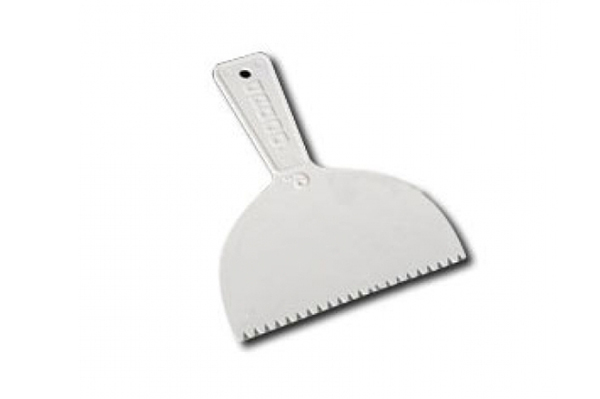An adhesive spreader is a tool designed to evenly distribute adhesives on surfaces before bonding materials together. It ensures proper coverage, prevents wastage, and improves adhesion strength. Whether in construction, woodworking, flooring, or crafts, adhesive spreaders play a crucial role in achieving strong and durable bonds.
In this article, we will explore the uses, types, and benefits of adhesive spreaders, helping you understand why they are essential for many bonding and sealing applications.
1. What Is an Adhesive Spreader?
An adhesive spreader is a tool or device used to apply and distribute adhesive evenly over a surface. Depending on the type of adhesive and the application, spreaders come in different shapes, sizes, and materials.
Some adhesive spreaders are handheld tools like notched trowels or plastic spreaders, while others are mechanical or automatic machines used in industrial settings. The primary purpose of an adhesive spreader is to ensure uniform thickness and proper adhesion.

2. Common Uses of an Adhesive Spreader
A. Flooring Installations
Adhesive spreaders are widely used in flooring applications, especially for installing:
Vinyl flooring – Ensures a smooth and even adhesive layer.
Tile flooring – Helps with mortar or tile adhesive application.
Wood flooring – Provides a strong bond between the floorboards and subfloor.
Using a spreader ensures that the adhesive is evenly distributed, preventing gaps or excess glue that could weaken the installation.
B. Woodworking & Furniture Assembly
In cabinet making, carpentry, and furniture production, adhesive spreaders are essential for gluing wooden panels, veneers, and laminates. They help in:
Evenly applying wood glue for strong joints.
Preventing glue excess that can cause a messy finish.
Reducing waste by controlling the amount of adhesive used.
C. Wall and Ceiling Installations
Adhesive spreaders are used in drywall installations, paneling, and wallpapering. They ensure even application of adhesives or pastes, helping materials adhere properly without air bubbles or weak spots.
D. Automotive and Industrial Applications
Car body repair – Used to spread adhesives and sealants in automotive repairs.
Manufacturing processes – Industrial machines spread adhesives on plastic, metal, and rubber materials.
3. Types of Adhesive Spreaders
A. Notched Trowels
Best for: Flooring, tiling, and large surface applications.
How it works: Has notches that create even ridges in the adhesive, ensuring proper grip and bonding.
B. Plastic or Rubber Spreaders
Best for: Small projects, wood glue, and crafts.
How it works: A flexible plastic or rubber blade evenly spreads adhesives over flat surfaces.
C. Roller Spreaders
Best for: Large surfaces like walls, floors, and industrial use.
How it works: A roller applies adhesive in a controlled and consistent manner.
D. Automatic Adhesive Spreaders
Best for: Industrial production lines.
How it works: Machines apply adhesive to paper, plastic, fabric, or metal in manufacturing settings.
4. Benefits of Using an Adhesive Spreader
Even Adhesive Distribution – Prevents clumps, weak spots, or excess glue.
Stronger Bonding – Ensures a firm and long-lasting hold between materials.
Saves Time and Effort – Faster application compared to manual spreading.
Reduces Waste – Controls the amount of adhesive used, preventing excess.
Professional Finish – Prevents visible glue marks or uneven surfaces.
Conclusion
An adhesive spreader is an essential tool for evenly applying adhesives in flooring, woodworking, construction, and industrial applications. It ensures strong, clean, and durable bonds, reducing waste and improving efficiency.
Choosing the right adhesive spreader depends on the type of project—from notched trowels for flooring to rollers for large surfaces and automatic spreaders for industrial use. Whether you’re working on a DIY project or a professional job, using an adhesive spreader guarantees better results and a professional finish.
Post time: 3月-27-2025






